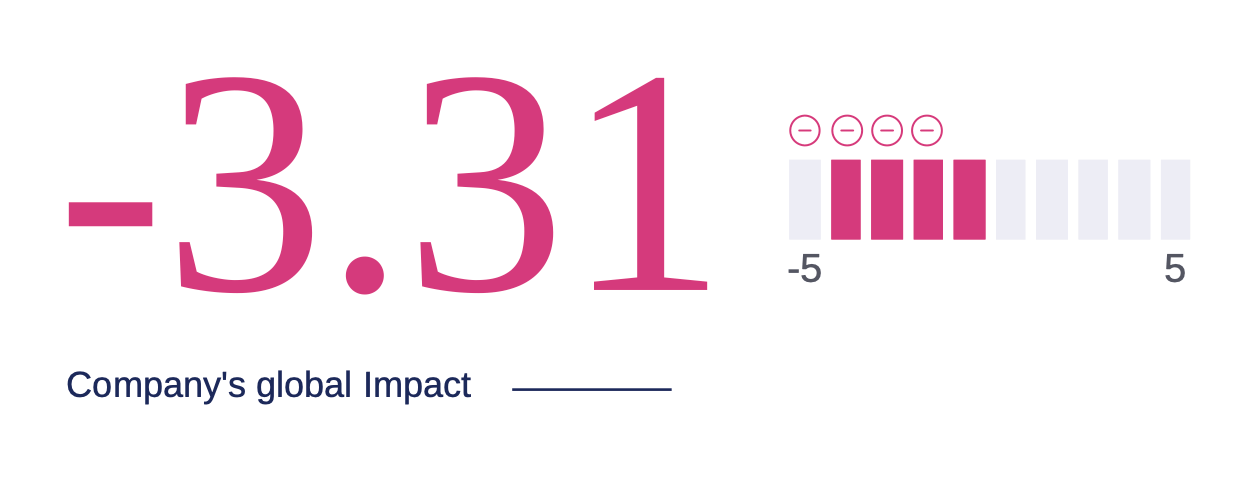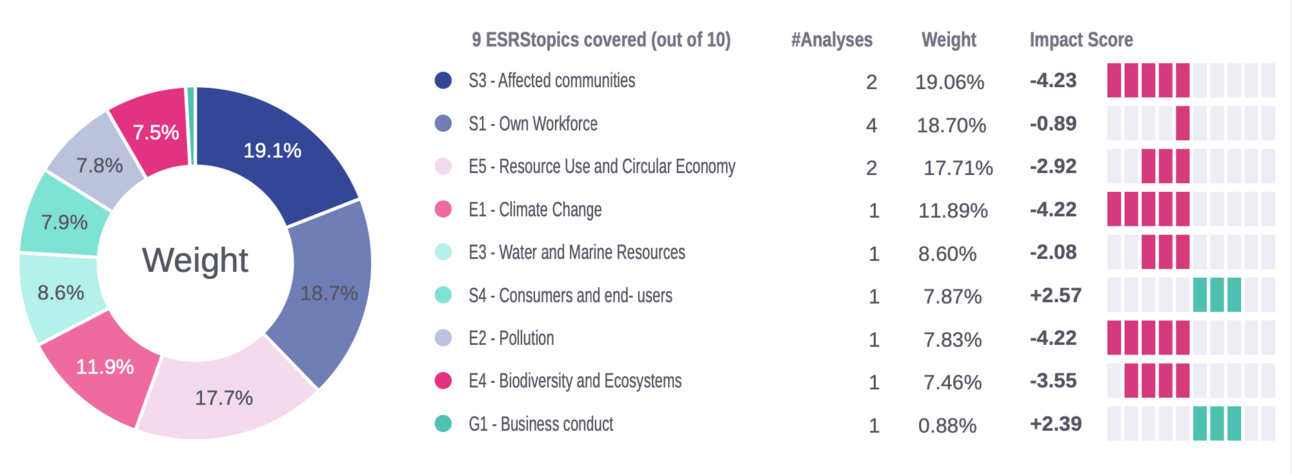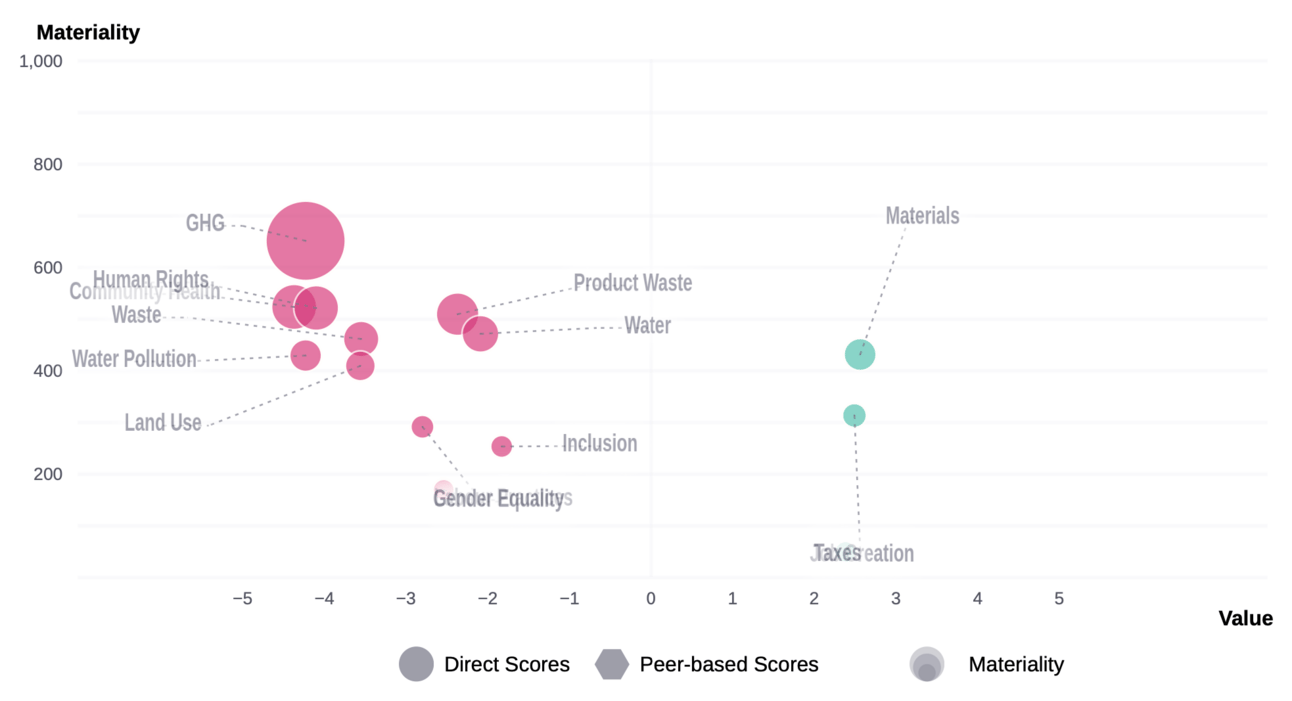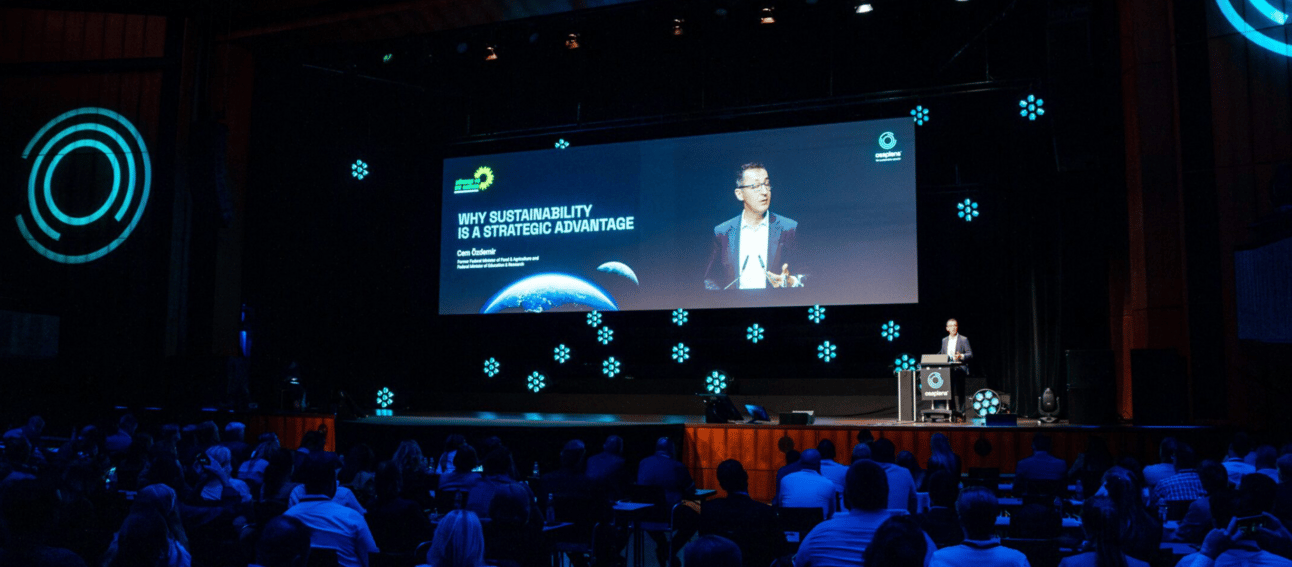- Green Digest
- Posts
- Evaluating a company's impact (the case of Vale)
Evaluating a company's impact (the case of Vale)
A deep dive into Vale's environmental and social impact

This week’s read time: 3 minutes
You are reading Green Digest Impact, a bi-weekly newsletter that provides in-depth analyses of companies’ environmental and social impact.
OUR APPROACH
Central to our narrative is the principle of double-materiality, which recognizes that a company's impact is twofold: it affects both the environment and society at large, and in turn, these external factors influence the company's financial and operational performance.
While traditional ESG assessments focus on the latter, we aim to examine companies' direct impacts on these factors. In pursuit of this, we introduce a unique scoring system that quantifies a company's impact.
PRESENTED BY OSAPIENS
Sustainability as a strategic advantage: The Sustainability osapiens Summit 2025
At the Sustainability osapiens Summit 2025 in Mannheim, over 2,200 leaders from business, politics, and technology gathered to explore how regulatory frameworks can be leveraged as strategic tools for resilience, transparency, and competitive advantage in sustainability. With insights from more than 150 speakers across 20 focused tracks, the event showcased companies like REWE, OTTO, and Kühne+Nagel turning compliance with EU regulations into opportunities for operational efficiency and supply chain transformation. Keynotes by Cem Özdemir and EU Commission Vice President Teresa Ribera reinforced the importance of practical, scalable sustainability solutions and the critical role of digital supply chain infrastructure. The summit underscored a growing shift: companies are not just reacting to regulation, they’re leading with it. The message from Mannheim is clear: sustainability is evolving from compliance to core strategy.
THIS WEEK’S COMPANY
Vale

This week, we dive deep into Vale’s environmental and social impact.
Vale is a Brazil-based multinational corporation and one of the world’s largest producers of iron ore and nickel, playing a critical role in the global metals and mining industry. The company operates in over 30 countries and is also involved in logistics, energy, and steelmaking.
Some interesting facts:
Vale operates the world’s largest iron ore mine, the Carajás Mine in the Amazon rainforest, which holds an estimated 7.2 billion metric tons of iron ore.
The company manages one of the largest freight rail networks in Brazil, with over 2,000 kilometers of tracks used primarily to transport minerals to ports.
COMPANY’S IMPACT
Vale’s overall impact score

Vale has a general impact score of -3.31 (on a scale from -5 to +5). Its impact is spread across nine European Sustainability Reporting Standards (ESRS) topics, split between positive and negative analyses.
In the socio-economic sphere,
Vale plays a central role in global infrastructure and industrial development by supplying essential metals such as iron ore, nickel, and copper — critical for construction, energy, technology, and transportation. Operating in over 30 countries, the company produced over 328 million tonnes of iron ore in 2024, accounting for 13% of global iron ore production. With a workforce of over 215,000 employees and contractors, Vale significantly contributes to employment and economic development, especially in Brazil. Through large-scale production and export, it supports national GDP and industrial ecosystems.
However, Vale’s socio-economic footprint is overshadowed by a troubling human rights record. The company has faced severe criticism for forced relocations, environmental degradation, and violence against Indigenous communities in Brazil, Mozambique, and Indonesia. In Brazil alone, dam collapses at Brumadinho (2019) and Mariana (2015) killed nearly 300 people and displaced thousands. Vale has also been heavily criticized for the slow pace of reparations and lack of transparency in compensating victims and restoring ecosystems. Survivors and local communities have repeatedly alleged delays, inadequate support, and lack of meaningful engagement. The health consequences of Vale’s mining activities are also extensive, affecting an estimated 1 million people due to air and water pollution near operations like the Carajás mine. Additionally, worker safety remains a concern, with five fatalities and over 430 recorded injuries (in 2022 only).
Environmentally,
the company reported 486.7 million tonnes of CO₂e emissions (latest data from 2022), with Scope 3 activities (mainly steelmaking) accounting for 98% of its footprint. It withdrew 137.9 million m³ of water, consuming 92.9 million m³, much of it from stressed areas. The company also disturbed 87,731 hectares of land, including tropical biodiversity hotspots, yet rehabilitated only 1.2%. Its metal production generates over 300 million tonnes of waste annually, with negligible reporting on recycling or circular economy efforts. Only 0.1% of its total waste was sustainably managed, and its tailings dams remain a critical risk. Meanwhile, the collapse of its Brumadinho dam continues to disrupt aquatic ecosystems in Brazil, with long-term water and soil contamination.
SCORES BY ESRS
Vale’s impact scores by ESRS topics

Positively (and by weight), the company scores the highest in S4 - Consumers and end-users (+2.57), and by G1 - Business Conduct (+2.39).
Negatively, the company scores the worst in S3 - Affected Communities (-4.23), followed by S1 - Own Workforce (-0.89) and E5 - Resource Use and Circular Economy (-2.92).
*the analysis takes into account the weight and impact materiality of each topic

CONCLUSION
Materiality Map & Final Words

So, Vale’s key social and environmental impact lies in …
its critical role in supplying raw materials essential for global infrastructure, energy, and technology. Operating in over 30 countries, Vale produces more than 328 million tonnes of iron ore and other key metals annually, supporting industrial growth and employment—especially in Brazil, where it anchors thousands of jobs and contributes significantly to the national economy.
However, this impact is counterbalanced by serious challenges. The company has been linked to human rights violations, forced relocations, and indigenous land disputes across Brazil, Mozambique, and Indonesia. Its operations have led to major environmental disasters, including dam collapses and extensive land and water degradation. With nearly 487 million tonnes of CO₂e emissions annually, high waste volumes, and minimal land rehabilitation, Vale’s environmental footprint is among the most severe in the industry.
Vale’s final impact score of -3.31 reflects the severe social and environmental risks tied to its operations, including human rights violations, ecological harm, and industrial disasters, issues that outweigh its economic contributions.
If you’d like to delve deeper into Vale’s impact, you can explore it here.
If you'd like to learn more about the scoring methodology, you can do so here.
Do you have a specific company you'd like us to cover? Send your suggestions to [email protected]
Did you like today's newsletter? |
Start learning AI in 2025
Keeping up with AI is hard – we get it!
That’s why over 1M professionals read Superhuman AI to stay ahead.
Get daily AI news, tools, and tutorials
Learn new AI skills you can use at work in 3 mins a day
Become 10X more productive
PARTNER WITH US

Increase your brand awareness and visibility by reaching the right audience and target market. Showcase your company, solutions, services, products, reports, surveys, events, or other content in front of our highly targeted audience of +4,250 Sustainability & ESG professionals. Contact us at [email protected] if you think we can partner in some way.
